|
By Faye Charpentier, History Program Director
Over the course of several hours and with the help of many hands from these dedicated volunteers, Christmastime has arrived at King’s Chapel. While “greening” for the holidays is now a fairly commonplace tradition throughout the United States not just at churches but at office buildings, banks, coffee shops and restaurants, and homes, this was not always the case. Shortly after King’s Chapel was founded in Boston in 1686, it was the first, and likely one of the only, buildings in New England, let alone Boston, to be decked out in greenery each December. As explored in further detail in a virtual program presented this year, Christmas was not widely celebrated in colonial New England, primarily due to religious and cultural differences between the several sects of Christian colonists. This is not to say that New Englanders had not previously celebrated Christmas until 1686, but rather that the establishment of King’s Chapel as the state-sponsored English church brought the first large scale and organized Christmas observances to the region. By the 1690s, King’s Chapel and its members were partaking in one of the oldest known traditions associated with the holiday: greening. Decorating with evergreens in December is not only one of the oldest Christmas traditions, but actually predates the Christian holiday of Christmas. Using greens around the winter solstice can be found across many cultures around the world, prior to Christianity. Using greenery was just one of many cultural traditions appropriated by the Roman Catholic Church for Christmas observances when the Church determined that Christmas would be scheduled to take place in December, despite no biblical evidence that Jesus was born in December. Boston’s Puritans did not participate in the greening of their churches and meeting houses after the arrival of churches like King’s Chapel who did decorate for the Christmas season because of the associations of greens with pagan solstice festivals as well as with Catholicism. Church financial records share that King’s Chapel began decorating with greenery as early as the 1690s. While there are no known images of the church decorated with greens from the 17th or 18th centuries, anecdotal evidence, such as the financial records, indicate that it was a yearly occurrence and a practice that Bostonians came to associate with Christmas at King’s Chapel. Between 1749 and 1754, King’s Chapel constructed its current building on the site of their previous chapel. Due to the much larger size of the new building, the church was able to continue to hold services within the original building for the first several years of construction, but by 1753, King’s Chapel required an alternative space for services. When the lay leaders of the church reached out to their Puritan neighbors about the possibility of holding their Christmas services in the Old South Meeting House that year, they were granted permission under one condition: King’s Chapel would not be allowed to decorate the Puritan meeting house with Christmas greens! “By a Vote of the Vestry of Kings Chappel, we are desired to Ask the favour of the use of your Church for our Congregation to Assemble in for Divine Service on Tuseday the 25.th of this Instant December being Christmass Day Your Compliance with which Request will greatly obledge the Memb.rs of s.d Comunity. as also Gentlemen Yo.r mo.t humb. Serv.ts Boston Decemb.r 6.th 1753 “To the Above letter Wee Receiv.d on the 14.th a Verbal answ.r, that our Request was Granted and their Church was at our Service for the time desired. only they Expected that wee would not decorate it with Spruce &.c” A small glimpse into what the 18th century greenery may have looked like comes from financial records in the 1790s. Between 1790 and 1797, church member and long-time vestryman Dr. Thomas Clement received payments from the church each December 24 for “Erecting Arches for Christmas.” While we cannot be sure exactly what this looked like, these records suggest that some sort of evergreen arches were used in decoration. In fact, a large evergreen arch does appear in the earliest known image of Christmas decor at King’s Chapel. The illustration, by a “Mr. Hill,” appeared in an 1856 edition of Ballou’s Pictorial Drawing-Room Companion, accompanied by an article about the church’s history. Of the illustration, the article boasts: “We present below a fine interior view of King’s Chapel, at the corner of School and Tremont Streets, Boston, as it appeared during the Christmas holidays, in its beautiful garniture of green. The wreaths, the festoons, and, indeed, all the decorations, are most tastefully arranged, and harmonize with the architecture. The King’s Chapel has always been noted for the beauty of its Christmas decorations.” In the illustration, notice not only the massive evergreen arch, but also the greens springing out of the tops of the columns and the star above the arch! Imagine how challenging it would be to decorate the church so elaborately! In the following decades, local newspapers, including the Boston Daily Globe, featured detailed descriptions of Christmas decorations among the local churches -- pretty similar to articles you may come across today following a local Christmas tree lighting ceremony! The greenery in 1873, for instance, sounds close to what we see in the 1850s illustration, including greenery wrapped around windows and the altarpieces, festoons and wreaths at each window, and a “Star of the East” hanging above the chancel. As the journalist wrote at the time, “The thickness and frequency of the bunches, wreaths, festoons and the like, make one almost feel as well as see what has been done.” With that in mind, try and picture how these decorations could be even more elaborate the following year! “The Christmas decorations here will be somewhat more elaborate than last year, and the style of the interior affords the best opportunity for a prime display. Nothing but evergreen and hemlock is used, and these massed upon the capitals of the columns and pilasters produce an excellent effect. There but little to be said in detail of the decorations further than that bands of green surmount the windows and doors, being placed wherever the general effect can be heightened.” - Boston Daily Globe, December 24, 1874 The 1880s provided new visual evidence of King's Chapel's history of Christmas greenery with an 1880 set of watercolors depicting the church at Christmastime and an 1886 photograph. The paintings, though small in scale, show a unique and often forgotten period in the chapel's decorative history. During the late 19th century, the church held a warm and richly colored interior, including terra cotta paint on the walls, dark wood pews, German stained glass windows, and red carpets in each aisle -- a stark contrast when compared with the current whitewashed interior paint scheme. Many of the Christmas decorations seen here can be found in the 1886 photograph that features greenery, including the boughs above the chancel and around the altar panels. This image, captured sometime in December 1886, is the oldest known photograph of King's Chapel decorated for the holidays. While the angle does not provide a view of the entire interior, hints of the grand decorations seen in the 1850s and 1880 can still be seen -- look to the tops of the columns in the background, the garlands above the stained glass windows, and the greens wrapped around the sounding board hanging above the pulpit. With the advent of electric Christmas light displays in the 1880s and 1890s, Boston's newspapers shifted their focus on the city's spectacular holiday decorations from churches like King's Chapel to department stores, including Houghton and Dutton, which was located directly across the street from the church. While Christmas lights sparkle throughout Boston during the holiday season, King's Chapel has maintained its beautiful and historic tradition of greening for Christmas.
While the evergreen displays pale in comparison to the spectacular greenery throughout the church in the 19th century, greening remains one of the longest traditions in the church, and certainly one of the most fragrant and festive! To learn more about the origins of holiday traditions, visit our Home for the Holidays webpage!
0 Comments
Leave a Reply. |
King's Chapel History ProgramDive deeper into King's Chapel's 337 year history on the History Program blog. Archives
July 2023
Categories
All
|
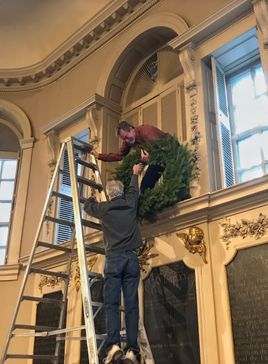
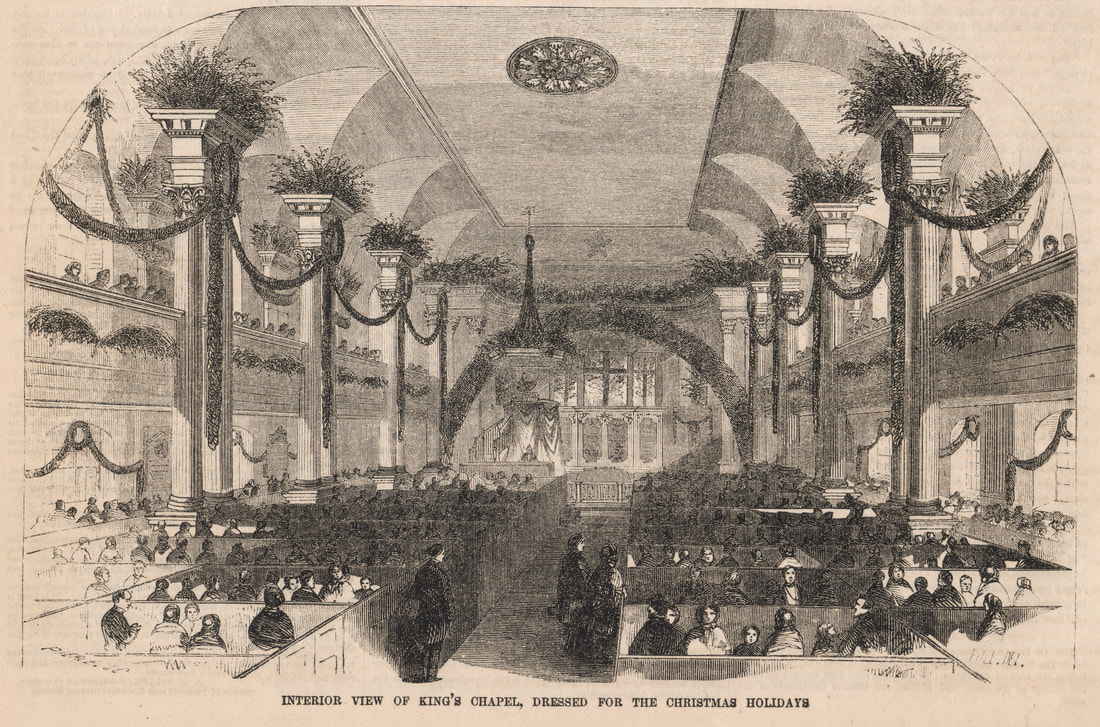
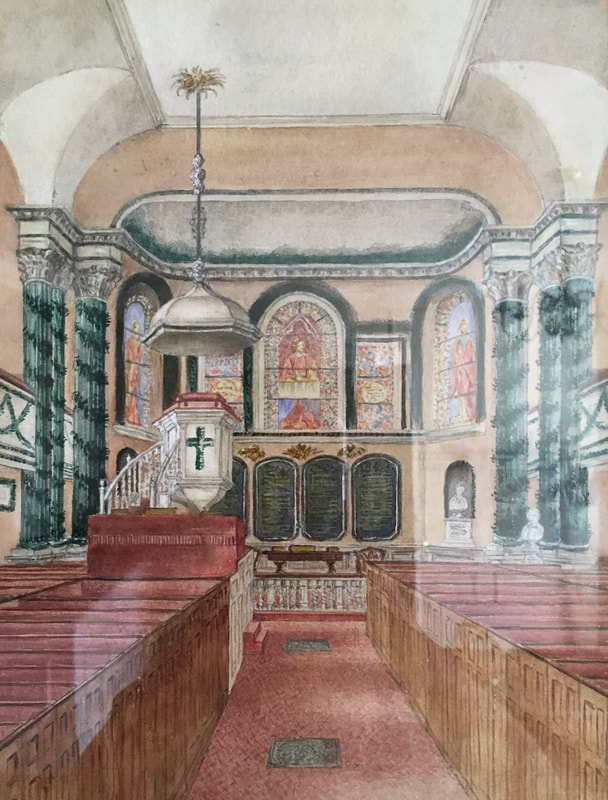
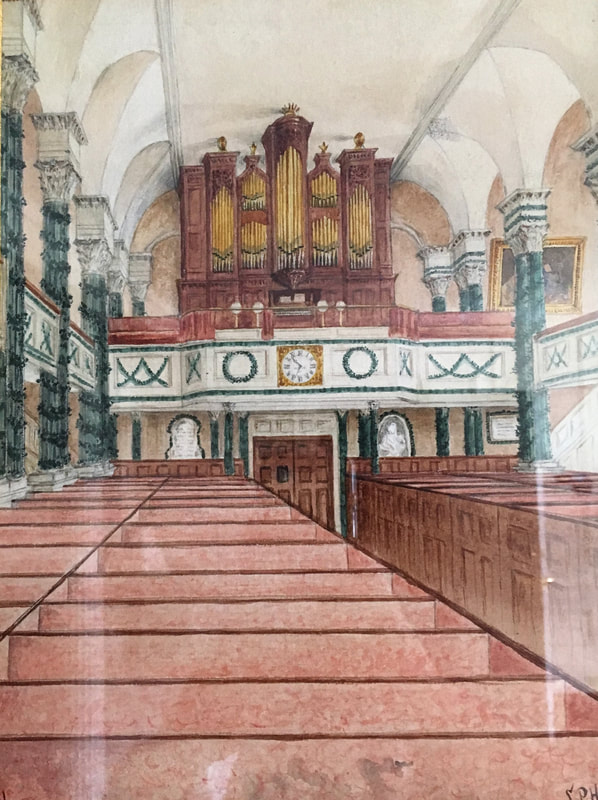
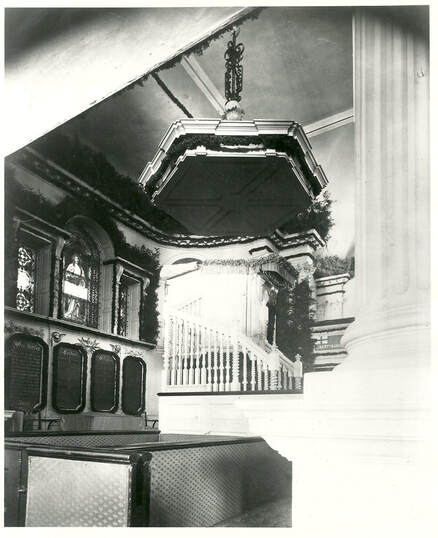
 RSS Feed
RSS Feed